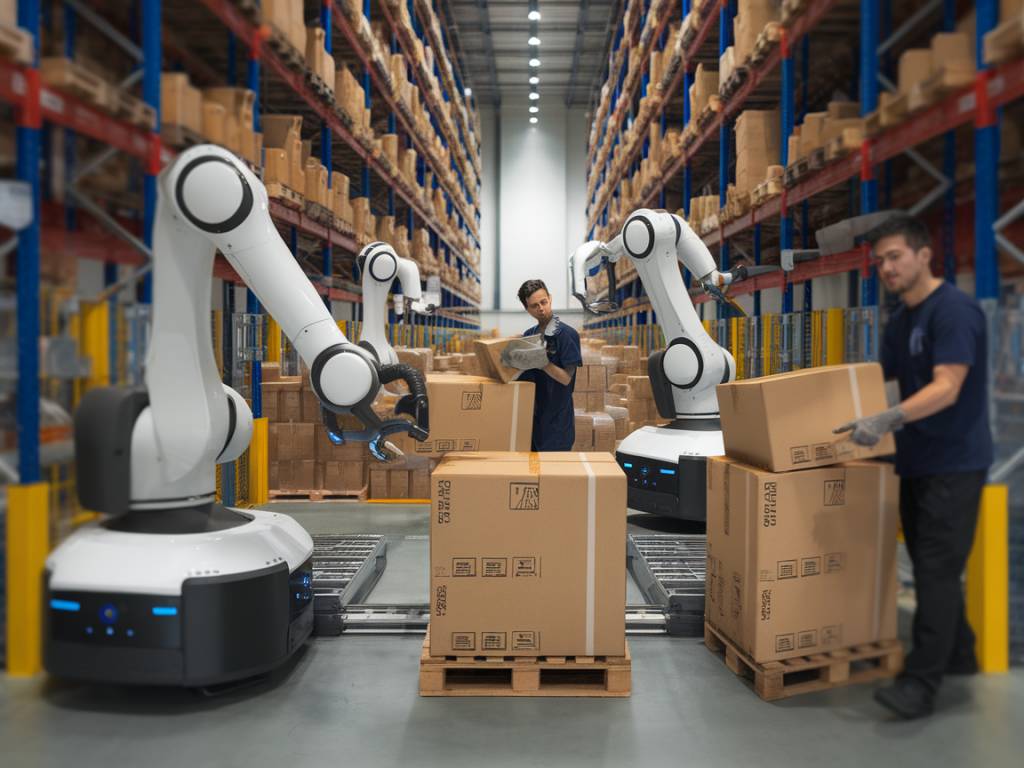In recent years, the logistics industry has faced numerous challenges, from increasing customer demands to the complexities of supply chain management. At the heart of these operations are warehouses, pivotal nodes that ensure the smooth transition of goods from manufacturers to consumers. To meet the modern demands of efficiency and accuracy, logistics companies are turning to technological solutions such as Artificial Intelligence (AI) and integrating them with Warehouse Execution Systems (WES). By marrying these two powerful tools, businesses are poised to revolutionize how logistics are managed, dramatically improving efficiency, accuracy, and adaptability in the supply chain.
The Role of AI in Modern Logistics
AI's role in logistics has grown exceptionally over the past decade. Offering capabilities beyond traditional automation, AI allows companies to predict trends, optimize routes, and ensure efficient allocation of resources. AI-powered systems can analyze vast amounts of data far more quickly and accurately than human operators, identifying patterns and insights that would otherwise be missed.
The implementation of AI solutions in logistics has various benefits:
- Predictive Analytics: AI can ingest historical data to predict future needs, helping logistics companies optimize inventory levels.
- Efficiency Boost: Automated systems can handle repetitive tasks, freeing human workers for more complex decision-making processes.
- Improved Accuracy: AI algorithms help reduce human error and elevate accuracy in order processing and shipment tracking.
Warehouse Execution Systems: The Backbone of Modern Warehousing
Warehouse Execution Systems (WES) function as critical components in ensuring that warehousing operations are carried out efficiently. Traditionally, these systems have handled the organization, management, and real-time operation of logistics workflows within a warehouse. With the rapidly changing landscape of inventory management, WES systems have evolved to provide advanced functionality beyond simple task management.
Modern WES solutions can integrate with various other systems, including Warehouse Management Systems (WMS) and Transportation Management Systems (TMS), to deliver holistic insights and streamline operations. Key features include order routing, resource scheduling, and real-time monitoring, making them indispensable for today’s warehouses.
Integrating AI with Warehouse Execution Systems
The integration of AI with Warehouse Execution Systems can unlock unprecedented levels of operational efficiency. This convergence offers businesses the chance to not only automate routine tasks but also optimize complex decisions that traditionally required manual intervention.
Warehouse Execution System enhancements using AI focus on several areas:
- Dynamic Slotting: AI algorithms determine optimal storage locations based on demand forecasts, ensuring that high-demand products are more accessible.
- Order Prioritization: Using machine learning, the system can prioritize orders based on criteria such as shipping deadlines and customer preferences.
- Predictive Maintenance: By analyzing equipment data, AI can predict potential failures and schedule maintenance proactively, minimizing downtime.
The Impact on Supply Chain Management
Beyond the confines of the warehouse, integrating AI with WES influences the entire supply chain. This synergy enhances logistics agility, allowing businesses to respond swiftly to market shifts, disruptions, or unexpected demand spikes. AI-driven WES can support:
- Enhanced Collaboration: Real-time data sharing and analysis lead to better collaboration between supply chain partners.
- Environmental Sustainability: By optimizing routes and reducing waste, logistics operations become more environmentally friendly.
- Customer Experience: Faster and more reliable deliveries enhance customer satisfaction, a critical competitive advantage in today’s market.
Challenges and Considerations
While the integration of AI with WES presents many opportunities, it is not without its challenges. Companies must consider the following:
- Data Privacy and Security: Handling large sets of data necessitates strict data protection measures to prevent breaches and ensure customer privacy.
- Implementation Costs: The initial costs associated with such integrations can be significant. Businesses need to evaluate the ROI carefully.
- Skill Gaps: Operating advanced AI-driven WES requires a workforce skilled in both logistics and technology, necessitating investment in staff training and development.
The Future Ahead
The future of logistics is set for a transformative change with the integration of AI and Warehouse Execution Systems. As technology evolves, the capabilities of these systems will expand, offering even greater opportunities for efficiency and innovation in supply chain management. For businesses willing to embrace these advancements, the potential gains in speed, adaptability, and customer satisfaction are substantial. As logistics continues to evolve, companies that adapt to these changes will be the ones leading in a highly competitive industry.

